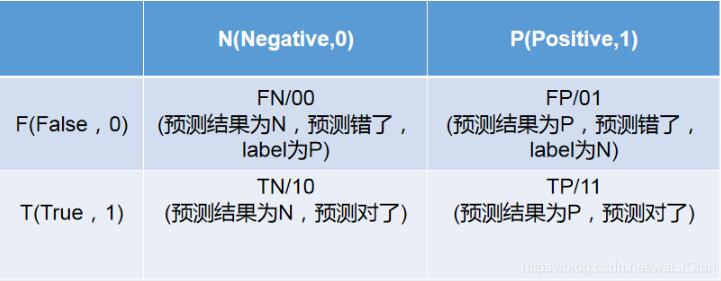python numpy中multiply與*及matul 的區別說明
multiply是對應元素相乘,而 * 、np.matmul() 函數 與 np.dot()函數 相當于矩陣乘法(矢量積),對應的列數和行數必須滿足乘法規則;如果希望以數量積的方式進行,則必須使用 np.multiply 函數,如下所示:
a = np.mat([[1, 2, 3, 4, 5]])b = np.mat([[1,2,3,4,5]])c=np.multiply(a,b)print(c)
結果是
[[ 1 4 9 16 25]]a = np.mat([[1, 2, 3, 4, 5]])b = np.mat([ [1],[2],[3],[4],[5] ] )d=a*bprint(d) #a是shape(1,5),b是shape(5,1),結果是一個實數
結果是
[[55]]
2、對于數組(Array)而言* 與 multiply均表示的是數量積(即對應元素的乘積相加),np.matmul與np.dot表示的是矢量積(即矩陣乘法)。
代碼:
if __name__ == ’__main__’: w = np.array([[1,2],[3,4]]) x = np.array([[1,3],[2,4]]) w1 = np.array([[1,2],[3,4]]) x1 = np.array([[1,2]]) w_mat = np.mat([[1,2],[3,4]]) x_mat = np.mat([[1,3],[2,4]]) print('x1.shape:',np.shape(x1)) w_x_start = w*x w_x_dot = np.dot(w,x) x_w_dot = np.dot(x,w) w_x_matmul = np.matmul(w, x) x_w_matmul = np.matmul(x, w) w_x_multiply = np.multiply(w,x) x_w_multiply = np.multiply(x, w) #w1_x1_matmul = np.matmul(w1, x1) x1_w1_matmul = np.matmul(x1, w1) w_x_mat_matmul = np.matmul(w_mat,x_mat) x_w_mat_matmul = np.matmul(x_mat, w_mat) w_x_mat_start = w_mat*x_mat x_w_mat_start = x_mat*w_mat w_x_mat_dot = np.dot(w_mat,x_mat) x_w_mat_dot = np.dot(x_mat,w_mat) w_x_mat_multiply = np.multiply(w_mat,x_mat) x_w_mat_multiply = np.multiply(x_mat,w_mat) print('W.shape:', np.shape(w)) print('x.shape:', np.shape(x)) print('w_x_start.shape:', np.shape(w_x_start)) print('w_x_dot.shape:', np.shape(w_x_dot)) print('x_w_dot.shape:', np.shape(x_w_dot)) print('x1_w1_matmul.shape::', np.shape(x1_w1_matmul)) print('做Array數組運算時:', ’n’) print('w_x_start:', w_x_start) print('w_x_dot:', w_x_dot) print('x_w_dot:', x_w_dot) print('w_x_matmul:', w_x_matmul) print('x_w_matmul:', x_w_matmul) print('w_x_multiply:', w_x_multiply) print('x_w_multiply:', x_w_multiply) # print('w1_x1_matmul:', w1_x1_matmul) print('x1_w1_matmul:', x1_w1_matmul) print('做matrix矩陣運算時:', ’n’) print('w_x_mat_start:', w_x_mat_start) print('x_w_mat_start:', x_w_mat_start) print('x_w_mat_dot:', x_w_mat_dot) print('w_x_mat_dot:', w_x_mat_dot) print('w_x_mat_matmul:',w_x_mat_matmul) print('x_w_mat_matmul:', x_w_mat_matmul) print('w_x_mat_multiply',w_x_mat_multiply) print('x_w_mat_multiply', x_w_mat_multiply)
x1.shape: (1, 2)W.shape: (2, 2)x.shape: (2, 2)w_x_start.shape: (2, 2)w_x_dot.shape: (2, 2)x_w_dot.shape: (2, 2)x1_w1_matmul.shape:: (1, 2)做Array數組運算時: w_x_start: [[ 1 6] [ 6 16]]w_x_dot: [[ 5 11] [11 25]]x_w_dot: [[10 14] [14 20]]w_x_matmul: [[ 5 11] [11 25]]x_w_matmul: [[10 14] [14 20]]w_x_multiply: [[ 1 6] [ 6 16]]x_w_multiply: [[ 1 6] [ 6 16]]x1_w1_matmul: [[ 7 10]]做matrix矩陣運算時: w_x_mat_start: [[ 5 11] [11 25]]x_w_mat_start: [[10 14] [14 20]]x_w_mat_dot: [[10 14] [14 20]]w_x_mat_dot: [[ 5 11] [11 25]]w_x_mat_matmul: [[ 5 11] [11 25]]x_w_mat_matmul: [[10 14] [14 20]]w_x_mat_multiply [[ 1 6] [ 6 16]]x_w_mat_multiply [[ 1 6] [ 6 16]]
python中轉置的優先級高于乘法運算 例如:
a = np.mat([[2, 3, 4]])b = np.mat([[1,2,3]] )d=a*b.Tprint(d)
結果是
[[20]]
其中a為1行3列,b也為1行3列,按理來說直接計算a*b是不能運算,但是計算d=a*b.T是可以的,結果是20,說明運算順序是先轉置再計算a與b轉置的積,*作為矩陣乘法,值得注意的在執行*運算的時候必須符合行列原則。
numpy中tile()函數的用法b = tile(a,(m,n)):即是把a數組里面的元素復制n次放進一個數組c中,然后再把數組c復制m次放進一個數組b中,通俗地講就是將a在行方向上復制m次,在列方向上復制n次。
python中的 sum 和 np.sum 是不一樣的,如果只寫sum的話,表示的是數組中對應的維度相加,如果寫 np.sum 的話,表示一個數組中的維數和列數上的數都加在一起。
如下圖所示:

補充:總結:numpy中三個乘法運算multiply,dot和* 的區別
引言:本人在做機器學習的練習1的時候,時常拋出錯誤:

意思是兩個矩陣相乘無意義。
線性代數中mxn 和 nxp的矩陣才能相乘,其結果是mxp的矩陣。
出錯源代碼:def gradientDescent(X,y,theta,alpha,iteration): colunms = int(theta.ravel().shape[1]) thetai = np.matrix(np.zeros(theta.shape)) cost = np.zeros(iteration) for i in range(iteration):error = X*theta.T-yfor j in range(colunms): a = np.sum(error*X[:,j])/len(X) ########## error! thetai[0,j] = thetai[0,j] - alpha*a theta = thetai cost[i] = computeCost(X, y, theta) return theta,cost
這里error是一個nx1的矩陣,theta.T也是一個nx1的矩陣。
而矩陣之間*運算符表示矩陣乘法。我們這里想實現矩陣的對應元素相乘,因此應該用np.multiply()實現。
總結:(讀者可使用簡單的舉例自行驗證)
1.*用法:矩陣與矩陣:矩陣乘法(matrix)
數組與數組:對應位置相乘(array)
2.np.dot()用法:矩陣相乘的結果
3.np.multiply()用法:數組、矩陣都得到對應位置相乘。
以上為個人經驗,希望能給大家一個參考,也希望大家多多支持好吧啦網。
相關文章:

 網公網安備
網公網安備